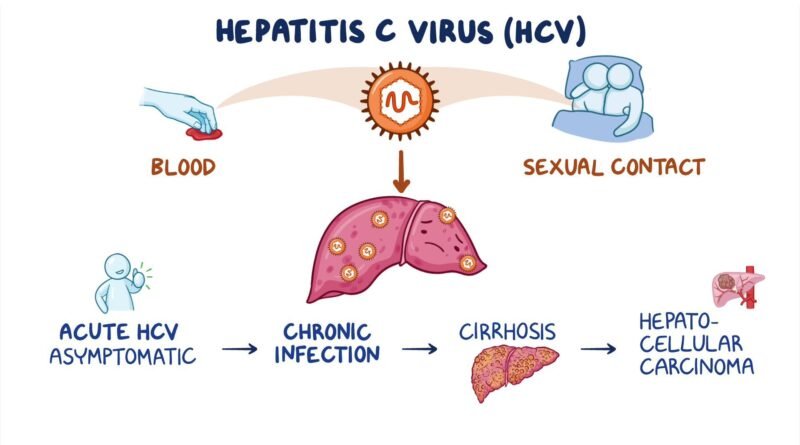About Hepatitis C | Ias Banenge
Context:
According to the World Health Organisation WHO Egypt became the first country to achieve “gold tier” status on the path to elimination of hepatitis C as per the global health body criteria.
Relevance:
GS II: Health
READ MORE – Ken-Betwa Link Project |Ias Banenge
Dimensions of the Article:
- About Hepatitis C
- Gold Tier Status
About Hepatitis C:
- Hepatitis C is a viral infection that primarily affects the liver.
- It can lead to both acute (short-term) and chronic (long-term) illnesses, which can be life-threatening.
Transmission:
- The virus is transmitted through contact with infected blood.
- This transmission can occur via practices like sharing needles or syringes, or as a result of unsafe medical procedures, such as receiving blood transfusions with unscreened blood products.
- It can also be passed from an infected mother to her baby and through sexual activities that expose individuals to blood.
- Importantly, hepatitis C is not transmitted through breast milk, food, water, or casual contact, such as hugging, kissing, and sharing food or drinks with an infected person.
Symptoms:
- Symptoms of hepatitis C may include fever, fatigue, loss of appetite, nausea, vomiting, abdominal pain, dark urine, and yellowing of the skin or eyes (jaundice).
Geographical Distribution:
- Hepatitis C is found in all WHO regions, with the highest disease burden occurring in the Eastern Mediterranean Region and European Region.
- New hepatitis C infections often do not exhibit symptoms, making early diagnosis challenging.
- In individuals who develop chronic hepatitis C infection, it often remains asymptomatic until decades after the initial infection, when symptoms emerge due to severe liver damage.
Prevention and Treatment:
- There is currently no vaccine for hepatitis C.
- However, the infection can be treated with antiviral medications.
Gold Tier Status:
Gold tier status is a designation that is achieved by meeting specific criteria and requirements related to healthcare and public health, particularly in the context of hepatitis C control and prevention. The criteria for obtaining gold tier status typically include:
- Blood and Injection Safety: Ensuring 100% safety when it comes to blood transfusions and injections. This includes implementing rigorous measures to prevent the transmission of infections, including hepatitis C, through these medical procedures.
- Needle and Syringe Distribution: Maintaining a minimum annual distribution of 150 needles or syringes per year for people who inject drugs (PWID). This is a harm reduction strategy aimed at reducing the transmission of bloodborne infections, including hepatitis C, among PWID.
- Diagnosis of Chronic Hepatitis C: Ensuring that over 80% of people living with chronic hepatitis C virus (HCV) are correctly diagnosed. Timely and accurate diagnosis is critical for initiating treatment and preventing further transmission of the virus.
- Treatment of Diagnosed Cases: Treating over 70% of individuals diagnosed with HCV. This involves providing appropriate medical care and antiviral treatment to individuals who have been diagnosed with hepatitis C to manage and potentially cure the infection.
- Sentinel Surveillance Programme: Establishing a sentinel surveillance program for hepatitis sequelae. This program monitors and tracks the long-term consequences or outcomes of hepatitis C, including liver cancer.
-Source: The Hindu




